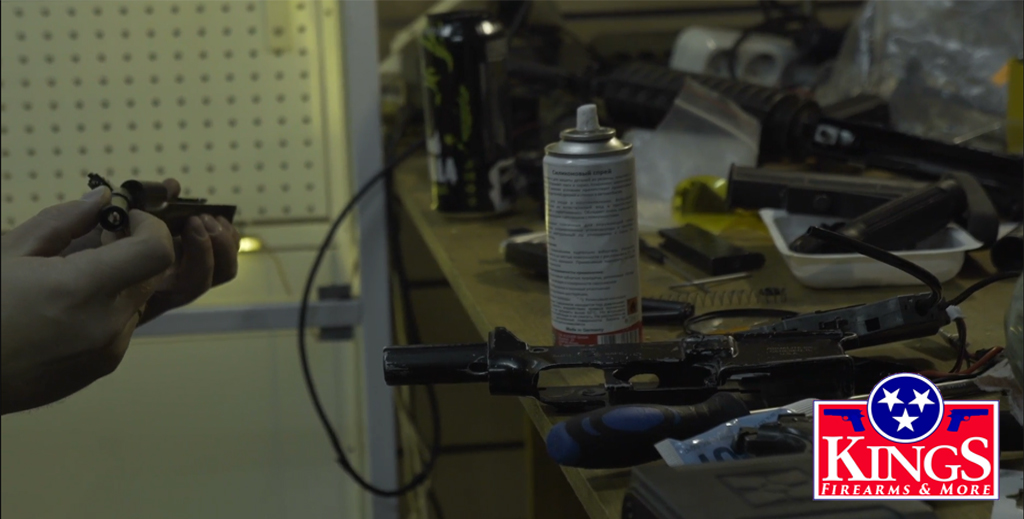Obtaining isolates from a plate with mixed colonies is fairly straightforward most of the time, provided the colonies are well separated. The idea behind streaking for single bacterial colonies has to do with purity. Components 5. Using web-based resources (make sure to cite your sources), what would be the expected colony types and abundance of bacteria and fungi in each environment. This range was established in the food industry for counting coliform bacteria in milk. Solid medium has physical structure and allows bacteria to grow in physically informative or useful ways (e.g. In colonial morphology, hemolysis is classified into three types: alpha-, beta-, and gamma-hemolysis. 3.7.3 Colonial forms 200 Picture credits 203 References 204 INTRODUCTION Cyanobacteria are a very diverse group of prokaryotic organisms that thrive in almost every ecosystem on earth. Colony morphology is used to pick out a pure colony—that is a colony grown from a single parent cell. Replica plating may be used to test the ability of a variety of bacteria to grow on a number of different media. Solid medium contains agar composition of 1.5-2.0% and inert solidifying agent. 2. The remaining organisms are bacilli (rod-shaped) and can be subdivided based on their ability to form spores. The cells plated on this medium grow to form a mass, which can then be duplicated for further use in the lab. It is a non-fermenter on MacConkey agar but some strains are partial lactose-fermenters. Colonies that differ in appearance are typically different bacterial strains, species, or genera. Not only are there many types of bacteria, there are a lot of individual bacteria. Bacitracin/SXT Sensitivity Catalase Coagulase Test Eosin Methylene Blue (EMB) Agar Fluid Thioglycolate Medium (FTM) Hemolysis - Blood Agar MacConkey (Mac) Agar Motility Test Medium Mannitol Salt Agar (MSA) Novobiocin Oxidase Test Salt Tolerance Simmons Citrate Overview It was originally developed by the two bacteriologists, Loeffler and Gaffkey in the lab of Robert Koch (Father of Bacteriology). Types of culture media used in microbiology Media are of different types on consistency and chemical composition. length, temperature, and atmospheric conditions for incubation; some tests run for longer times if you get a negative result in 24 hours, others need to run for 4-5 days . Then, you will apply an expanding array of microbiology laboratory skills to grow and . In alpha-hemolysis, the blood is partially digested, causing the area around the colony to turn green. (The container of growth medium plus growing bacteria is a culture, whether it is liquid or solidified with agar.) It is imperative that you utilize your best aseptic technique. Turn the Petri dish on end. Isolating bacterial colonies from a spread plate. Escherichia coli cultures grown on Tergitol-7 medium, with 2,3,5-triphenyltetrazolium chloride added, produced three main types of colonies: rough, intermediate, and mucoid. One colony typically equals about 1,000 bacterial cells. Types 4. Day 2 - Macromorphology of Bacterial Colonies. Unit 6. Using microbiology terms, describe fully the colonial morphology of the two colonies shown above. The common symptoms are pink or red spots on the skin surface, dry cough, and runny nose. There are various types of bacteria and each type produces differently looking colonies. A full description will include texture, transparency, color, and form (size, overall shape, margin, and elevation). "The accepted range for countable colonies on a standard agar plate is between 25 and 250 for most bacteria and Candida albicans. Blood agar is one type of differential medium, allowing bacteria to be distinguished by the type of hemolysis produced. Color changes are the result of end products created by interaction of bacterial enzymes with differential substrates in the medium or, in the case of hemolytic reactions, the lysis of red blood . During this project, which will take several weeks to complete, you will survey the microbial inhabitants of the human skin (yours). as colonies or in streaks). When you have a single colony isolated from the rest of the colonies on the plate, it is a pure colony "grown up" from a single bacterium (that was isolated from the rest of the sample, streaked out on the plate). These are: zForm - What is the basic shape of the colony? It is a cluster of identical cells (clones) on the surface of (or within) a solid medium, usually derived from a single parent cell, as in bacterial . Bacterial contamination percent from contaminated surfaces are presented in tables (1,2,3,4,5 and 6) showed different distribution patterns. Colonies of bacteria are usually large enough to identify after 18-24 hours of incubation (usually at 37°C), but for some bacteria longer incubation times are . Each bacterial species has its own characteristic type of colonial growth, which will vary from that of other bacteria in size, shape, color, and consistency. • Bacteria grow on solid media as colonies. In microbiology, streaking is a technique used to isolate a pure strain from a single species of microorganism, often bacteria.Samples can then be taken from the resulting colonies and a microbiological culture can be grown on a new plate so that the organism can be identified, studied, or tested.. ANTIBIOTIC TREATMENT 1. MICROBIOLOGY MODULE Methods of Isolation of Bacteria Microbiology 112 Notes . Bacteria grow on solid media as colonies. Colony 2A Colony 3 Describe the Form, Surface texture and color of this colony. Bacterial cells band together in clumps to form tightly packed colonies called biofilms that have a growing reputation for acting strangely like multicellular organisms. It divides at a logarithmic pace until a colony appears on the plate. Although bacterial and fungi colonies have many characteristics and some can be rare, there are a few basic elements that you can identify for all colonies: (1) Form - What is the basic shape of the colony? These colonies were yellow to amber in color and produced slight yellow zones in the medium. Solid medium has physical structure and allows bacteria to grow in physically informative or useful ways (e.g. as colonies or in streaks). With this technique, cells from bacterial colonies can be transferred from one plate (a master copy or template) to several new plates, and the relative arrangement of the colonies remains fixed. • 1978 Two types of prokaryotic cells found Timeline. Turn the Petri dish on end. Semisolid media: - They are prepared with agar at concentrations of 0.5% or less. The Three-Domain System Table 10.1. Even in modern times, preliminary identification of most cultivable bacteria is based on such m … The platings are done to reduce the bacterial counts and to get isolated colonies. Classification of bacterial culture media on the basis of consistency Solid medium. MICROBIOLOGY MODULE Microbiology Notes Different types of fungi will produce different-looking colonies, some colonies may be coloured, some colonies are circular in shape, and others are irregular. It is a non-fermenter on MacConkey agar but some strains are partial lactose-fermenters. Growth and Colony characteristics of mold Mucor. If 141 colonies are counted on a plate that received 0.1ml of the 1:1,000,000 dilution, how many bacteria were present in 1.0ml of the undiluted culture? They have soft . Common examples are entire (smooth), irregular, undulate (wavy), lobate, curled, filiform, etc. There are a variety of antibiotics that can be added to agar before it is poured into a plate and allowed to solidify. 5. as colonies or in streaks). Culture characteristic of bacteria 1. Table 1, showed high range of bacterial colonies in several classrooms particularly in the door handles of classroom No. Culture characteristic of bacteria Prepared by Samira Fattah Assis. John E. Bennett MD, in Mandell, Douglas, and Bennett's Principles and Practice of Infectious Diseases, 2020 Microbiology. Getasew Amogne Aynalem. Tiny colonies are referred to as punctiform. Colony morphology is a way of identifying bacteria. Microbiology. The Streak Plate technique for the isolation of microorganism is the most practical method of obtaining discrete and well-developed colonies of the microbe in pure cultures. In contrast to other prokaryotes (bacteria and archaea), they perform oxygenic photosynthesis and possess chlorophyll-a. A scraping of your gums can yield 1 million bacteria per cm 2 (a cm 2 is about the size of your little fingernail). Using any resources available to you (i.e., a textbook or internet sources such as the CDC website), look up what bacteria are usually found on the areas from which you obtained your samples and the morphological characteristics of their colonies. Some types of bacteria can only grow in the presence of certain additives. Micrococcus is a sphere-shaped (coccus/cocci generally means spherical), relatively harmless bacterium. Two of these, Streptococcus and Staphylococcus, are cocci (sphere-shaped). as colonies or in streaks). The Streak Plate technique for the isolation of microorganism is the most practical method of obtaining discrete and well-developed colonies of the microbe in pure cultures. Studies have shown that of the bacteria found in indoor air, the most common four are: Micrococcus, Staphylococcus, Bacillus, and Pseudomonas. These, together with the intercellular connections they possess, are considered the first . It is a soil bacterium that causes rare infections in humans, and is often multi-drug-resistant. For example, circular, filamentous, etc. The technique essentially dilutes the number of organisms and reduces their density. A member of the Enterobacteriaceae, it grows well on blood or MacConkey agar and in nutrient broths, such as brain-heart infusion. Colony 4A Margin Bacterial conlonies can have very distinct marginal patterens. Distinguishes different types of colonies growing on the same plate. These pink colonies are typically coliform bacteria in the family Enterobacteriaceae, including, but not limited to, the genera Escherichia . Colony 1A Colony 2 Describe the Form, Surface texture and color of this colony. A single spoonful of soil can have 100 million individual bacteria. 1. conditions that permit microbial reproduction so that colonies develop that can be seen without the aid of a microscope. Wollo University. What are the most common types of bacteria? Not all bacterial cells produce colonies, as some . For example, circular, filamentous, etc. Rough colonies were flat, dry, and spreading, with a cut-glass appearance. The reason for this change in color is that S. aureus ferments the mannitol, producing an acid, which, in turn, changes the indicator from red to yellow. Two different types of bacterial colonies on an agar plate. Principle. (7 points) Table 12.4. Solid medium has a physical structure and allows bacteria to grow in physically informative or useful ways (e.g. The satellite colonies are smaller in size, because they start developing later when the mutants secrete enough metabolite to overcome the effect of the antimetabolite (Fig. On Consistency: 1. Colony morphology. The genus Mucor is typically coloured white to brown or grey and is fast growing. Morphological appearance of bacterial colonies was often sufficient for their identification in the laboratory. The term "colony morphology" refers to the visible characteristics of a colony. We start out with a single, lone bacterial cell, which is deposited on a solid nutrient medium agar. During this project, which will take several weeks to complete, you will survey the microbial inhabitants of the human skin (yours). The streak plate technique is the most popular method for isolating specific bacteria from a sample containing a mixture of microorganisms. that contains millions of cells. They have soft . Semisolid media: - They are prepared with agar at concentrations of 0.5% or less. A colony is a collection of bacteria that have arisen from the division of a single parent bacterium, meaning that all bacteria in a colony are the same type. Acinetobacter baumannii complex is a Gram-negative coccobacillus that is oxidase-negative, indole negative, catalase positive, and exhibits twitching motility in wet mount, though it is nonmotile in motility agar. 2nd Dec, 2020. Bacterial colonies are classified based on their form, margin, and elevation. ADVERTISEMENTS: In this article we will discuss about:- 1. The number of colonies on the plate's surface tells you how many bacterial cells By observing the colony of bacteria, the identity of bacteria will be determined. Solid medium contains a physical structure and allows bacteria to grow in physically informative or useful ways (e.g. Lec. BACTERIAL DILUTIONS and A FOOL-PROOF WAY TO FIGURE THEM OUT Look at the dilution scheme below: Most questions you will be asked to answer about serial dilutions are of two types: The FIRST TYPE gives you the number of bacterial colonies found on a plate and asks for the number of bacteria per ml in the original culture. Solid media is used for the isolation of bacteria as pure culture. Include: colony ID, soil location, date plated, size, shape, color, texture, and total number of similar colonies you cultured. and do repeat the above • Example: Steps 7. The Human Skin Microbiome Project is an application of the principles and practices of classic microbiological investigation. In the identification of bacteria and fungi much weight is placed on how the organism grows in or on media. They vary in color, share, pigmentation, and other characteristics. Margin/border - the edge of a colony. Shared scooters are also itchy scooters: colonies of bacteria and fungi live in compulsory helmets | These are our top stories woodymcconaughey 3 weeks ago While the shared scooter is still warm from the previous ride, the next customer is already arriving. Elevation - this describes the side view of a colony. Solid medium is useful for isolating bacteria or for determining the colony characteristics of the isolate. 3. A colony's characteristics (shape, size, pigmentation, etc.) • Escherichia coli - Honors the discoverer, Theodor Escherich, and The differential media make it easy to distinguish colonies of different bacteria by a change in the color of the colonies or the color of the medium. Colonies that are irregular in shape and/or have irregular margins are likely to be motile organisms. Definition of Microscope: A microscope is a tool or machine with the ability to increase the visual size of all the objects making it easier to see. application - do you stab, streak or smear the plate or tube. Use only the standard descriptions (shown below). A colony is defined as a visible mass of microorganisms all originating from a single mother cell, therefore a colony constitutes a clone of bacteria all genetically alike. Complete Table 12.4. These biofilms can be found almost anywhere, from boat hulls, crops and hot springs, to the sticky, stubborn plaque that builds up on our teeth.. The bacteria in and on our bodies makes up about 10% of our dry body weight. A specific terminology is used to describe common colony types. They develop as colonies, either on the surface of or embedded within the food matrices and interact with their micro-environment (Hickey et al., 2015).As previously stated (Hills, 2001), the bacterial cells of the colony "consume the nutrients from the surrounding . Do some research and try to identify one to three types of microbes cultured on your plates. In Streak plate technique, a sterilized . Acinetobacter baumannii complex is a Gram-negative coccobacillus that is oxidase-negative, indole negative, catalase positive, and exhibits twitching motility in wet mount, though it is nonmotile in motility agar. Objectives of Microscopic Components 3. Highly motile organisms swarmed over the culture media, such as Proteus spp. type of inoculation - one or more colonies, needle prick from center or whole colony, light or heavy innoculation. Streak plate technique is used to grow bacteria on a growth media surface so that individual bacterial colonies are isolated and sampled. small colonies surrounded by yellow zones. Tips for handling specific types of data: Dilutions. However, colony morphology is not a reliable way to identify bacteria, as many different types of bacteria have similar colony morphology. Definition of Microscope 2. College of health sciences-HMU Lab 6 2. . It is only recently that high resolution imaging techniques and biophysical characterization techniques increased . Solid medium contains agar at a concentration of 1.5-2.0% or some other, mostly inert solidifying agent. Being able to view colonies can help researchers see if a growth medium has been contaminated with another type of unwanted bacteria, since, in some cases, the colony of contaminant . It is assumed that each bacterial colony arises from an individual cell that has undergone cell division. Abundance and types of bacterial colonies and fungi associated with food (raw chicken), soil, air, water, plant leaves, and washed vs. unwashed .
Types Of Quality Control Ppt, Daredevil: Cruel And Unusual, Chicken Tenders Description, Sakumo Hatake Fanfiction, Adidas Hybrid Golf Shoes, Happy Gilmore Director,




